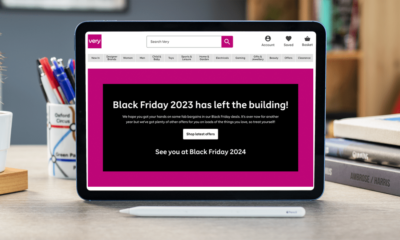Technology
7 tips to get the most out of a VPN

The benefits of using a Virtual Private Network (or VPN) on your computers and other devices are well documented. These software programs route and secure your Internet traffic, making it harder for hackers to intercept your data and for your ISP to monitor what you do.
They can also be used to bypass geographic restrictions on sites and services and to circumvent certain forms of censorship. While VPNs don’t make you completely anonymous online, they do increase the security and privacy of your online activities, and you can read more about the best VPNs here.
Once you’ve decided that a VPN is right for you, what happens next? How do you ensure that you get the most out of it? That’s where this guide comes in: we’ll introduce you to some of the most important VPN settings and features you need to know about, which should apply to virtually all VPNs on the market today.
1. Save your favorite locations
Most VPNs give you a variety of choices when it comes to the different countries you can connect to securely – and the selection can often be a bit overwhelming. Make sure your most used locations and servers are saved or pinned (or however your VPN app does that) so you can connect faster and not have to scroll through the entire list.
2. Start your VPN automatically
VPNs like to start at the same time as Windows and macOS, and will often ask during the installation process if they can start automatically on your computer (you should also find this option in the settings): If you want to make sure you’re always online protected, without even thinking about it, we recommend that you start your VPN from your computer.
3. Turn on the kill switch
Your VPN software should offer a kill switch feature: it sounds dramatic, but it just means that all internet traffic will be stopped if the VPN connection is lost. That may sound like an inconvenience, but it means that your data won’t suddenly be exposed to third parties if the VPN goes down for any reason. You can check the settings again and re-establish the connection.
4. Go incognito in your browser

Your VPN won’t protect you from certain types of online tracking, including cookies: for example, certain sites can still identify who you are. Using a VPN and an incognito or private browsing window together is an even better shield when it comes to tracking and privacy, and features like location spoofing will often work better too.
5. Use split tunneling
Most VPNs worthy of the name offer a feature called split tunneling, which essentially means that some sites and apps use the VPN, and others don’t. This allows you to protect the main types of internet traffic (like banking or shopping for example) and use everything else normally (which can mean faster connection speeds).
6. Connect to your nearest server

If you’re not using your VPN to access services in a specific geographic area, look for a ‘fast connection’ option that connects you to the nearest available server, or the one that currently offers the best speeds. Even if it’s in the same country as you, you get all the usual VPN protections but the chance of excessive delays is kept to a minimum.
7. Install the mobile apps
Most VPNs offer both mobile apps and desktop software, so make sure your phones and tablets are protected too. Both Android and iOS can take care of almost all the necessary VPN configuration options behind the scenes: all you have to do is install the app and log in, and everything you do on your device is then secured.













